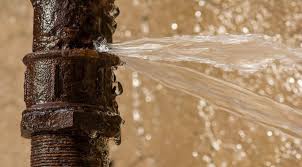Dealing with a leaking pipe can be a frustrating and potentially costly issue if not addressed promptly. Whether it’s a small drip or a significant leak, knowing how to seal a leaking pipe can save you time, money, and prevent further damage to your property. In this guide, we’ll walk you through the steps to identify, temporarily fix, and permanently seal a leaking pipe.First, it’s essential to identify the source of the leak. Leaks can occur due to corrosion, high water pressure, or physical damage to the pipe. Here’s how you can locate the leak:
- Check for visible water stains or puddles near pipes.
- Listen for dripping sounds, especially in quiet areas like basements or crawl spaces.
- Use a piece of tissue paper to detect subtle leaks by running it along the pipe.
Once you’ve identified the leak, you can proceed with temporary fixes to minimize damage until a permanent solution is implemented. Here are some quick fixes:
- Pipe Clamps and Rubber Sheets: Wrap a rubber sheet around the leaking area and secure it with a pipe clamp. This can stop minor leaks effectively.
- Epoxy Putty: Knead the putty and apply it directly over the leak. It hardens quickly and creates a watertight seal.
- Pipe Tape: For small leaks, wrapping the pipe with waterproof tape can provide a temporary solution.
For a permanent fix, you may need to replace the damaged section of the pipe or hire a professional plumber. Here’s a step-by-step guide to replacing a pipe section:
- Turn off the water supply to the affected area.
- Cut out the damaged section using a pipe cutter.
- Measure and install a new pipe section, ensuring it fits snugly.
- Use appropriate connectors and sealants to secure the new section.
- Turn the water back on and check for leaks.
Preventing future leaks is just as important as fixing existing ones. Here are some preventive measures:
- Regularly inspect pipes for signs of wear or corrosion.
- Maintain proper water pressure to avoid stressing the pipes.
- Insulate pipes in cold areas to prevent freezing and bursting.
In conclusion, sealing a leaking pipe is a manageable task if you follow the right steps. Temporary fixes can help mitigate immediate damage, but a permanent solution is often necessary for long-term reliability. By staying proactive with maintenance, you can reduce the likelihood of future leaks and keep your plumbing system in top condition.

